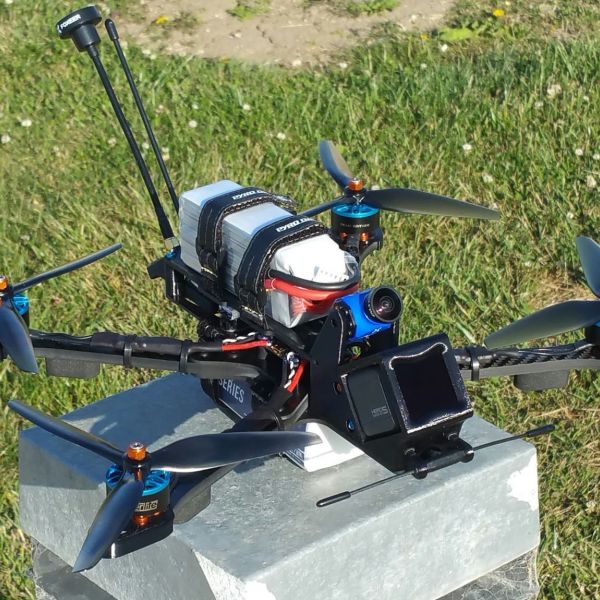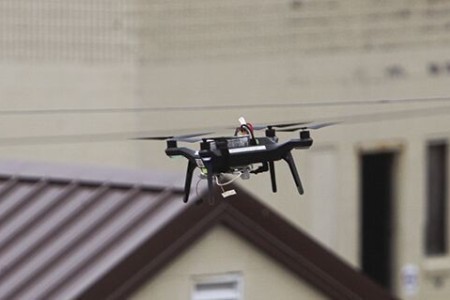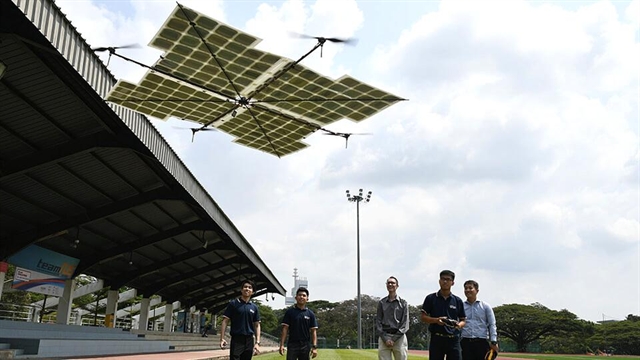
While there are many advantages to using drones for inspection, not all drones will be suitable for your job. While drones can be used to inspect assets, inspectors must still perform the work manually. Drones are just another tool that inspectors have at their disposal. Inspectors may still prefer to see with their own eyes and hang inspection cameras from ropes before dropping them into assets. In these situations, drones are the perfect tool.
Drone 20
Among the advantages of using a drone for inspection is its ability to capture high-quality data at high speed. Drones are able to capture a consistent image without the need to climb down to view the contents of buildings. You can identify small imperfections or missing elements with the zoomed view. Since 2016, the US-based team at Shell Deer Park have used drones for inspection. The drones can be used to inspect industrial equipment such as flare tips or floating roof tanks and capture detailed information without human intervention.
Thermal camera
The thermal camera can be attached to a drone to inspect. There are many benefits. You can inspect large areas quickly with it. Secondly, thermal imaging is faster than other types of inspection, and you can even view objects up close. The Emitec drone is equipped with an advanced thermal imaging system and uses a proprietary HD downlink solution to transmit the thermal image to multiple monitors or a tablet PC.
Light
Drones have been around since the early 2000s, and the technology behind it has changed significantly. It doesn't matter whether you use a small drone to inspect or a larger, more sophisticated industrial drone for data collection, it can be used in many different applications. Drones are the best choice in the energy sector for inspecting power lines and gas lines, and providing valuable insights. A drone can be used to inspect wind turbines. It can scan the leading edges and lightning receptors. Drones can take high-resolution photos of damage or defects and collect data about the turbine's health. These data can be used to plan for the repair work.

Vertical attachment mechanism
A vertical attachment mechanism for a drone for inspection is a simple way to attach it to a surface. These drones can hover at high altitude above the surface. The sensor probe can also be detached from the surface for testing. Drones can hover on the surface using their articulating joint, which may absorb some impacts if the UAV crashes onto its side. They can also be controlled remotely and partially automated.
Safety
Drones are becoming an increasingly popular method of inspection. These drones can be used to automate material transport, monitoring, and inspection. For example, an FCC unit converts heavy crude oil into more valuable fuel products. It is composed of multiple pipes and cyclones. A pipe known as the riser is found in the centre of the unit. It mixes heavy oil with a powdered catalyst at high temperatures. Inspection workers would need to see an access hatch at the top of the riser to inspect the pipe manually. Then, they would use ropes to lower themselves into the pipe. With a drone, this risk is eliminated completely.
Cost
There are several benefits to using a drone for construction site inspection. Drone inspections are cost-effective and offer convenience. Scaffolding can be disruptive and costly. Drones can also reduce the need for liability insurance. It is possible to save thousands of dollars annually on maintenance. Although drone inspections are used by many construction companies, they are not the only ones.
Efficiency
Although drones can be used for inspection, they cannot replace a human inspector. A typical inspection task can take 10 to 12 hours if a technician is present. Drones can complete this task in less time than an hour. These drones can access tight spaces that humans cannot. Drone inspection can help companies save thousands of dollars. This technology has not yet been made available to every industry.

FAQ
Is it necessary to have special training in order to fly a drone
No, you don’t have to learn any special skills in order for your drone to fly. All you need is a remote control unit and some basic knowledge of flight mechanics.
What laws apply to drones flying above private property?
New rules were recently published by the FAA regarding commercial drone flights. These rules only apply to UAVs less than 55 lbs and lower than 400 feet above the ground. Commercial operators need to register with the FAA in order to obtain a license. They will also require permission from local authorities to operate near airports and other restricted areas.
Does the FAA regulate drones
The FAA oversees all aspects drone operations including safety standards and certification requirements.
Statistics
- According to ZipRecruiter, the minimum hourly wage of drone pilots is $20. (thedroneu.com)
- With the top 10% making over $100/h and the bottom 10% making as low as $10/h. (dronesgator.com)
- According to industry research from ZipRecruiter , there are 10 cities where the typical salary for a Drone Pilot job is above the national average. (dronesgator.com)
External Links
How To
How To Fly Drones For Beginners
A drone is an unmanned aerial vehicle that can be remotely controlled and used for surveillance, aerial photography, film production, research, and other hobby purposes. Drone technology has been around since World War II. DJI introduced their Phantom series of quadcopters in 2010, but commercial use only began in 2010. From beginner-friendly drones such as Parrot AR Drone 2.0 through professional-grade multirotor craft like DJI Mavic Pro, many types have been available.
There are many ways to fly a drone.
-
Remote control: This uses a remote control device that attaches to your hand and allows you control the drone along its flight path. There are two main types, On/Off switches (like radios) and joysticks.
-
Manual Control – This allows remote operation of the drone via GPS coordinates using a smartphone application. You will need to keep track of where the drone is going and follow the directions from the app.
-
Autonomous Flight – This is when the drone handles all the piloting tasks. The drone is able to fly autonomously, without the need for human intervention. To enable autonomous flight, the drone should have a built in camera and sensors capable recording images and data.
-
Triggered Flying - This method works in the same way as manual control. However, the pilot has to manually set up a route for the drone and it follows that route until reaching the endpoint. The drone automatically lands once the route has been completed and returns to the base.
-
Landing Gear – Some drones are equipped with landing gear, which allows them to safely land if they lose power during flight.
-
Goggles - Some pilots wear goggles to protect themselves from debris while operating.
-
Camera - You can capture photos and videos with your drone from the air.
-
Obstacles - Some drones can be equipped with obstacle avoidance systems that prevent them from crashing into obstacles.
-
Speed - Drones can reach speeds up to 40 mph.
-
Battery Life – Most drones will last 20 minutes to three hours depending on how powerful they are.
-
Some drones are capable of traveling up to 30 miles depending upon their make and model.
-
Power source: Some drones will require an external power source while others can be powered by internal batteries.
-
Weight - Some drones can be as light as 1 pound while others can reach 4 pounds.
-
Size - Drones range from small devices that fit in one's palm to large crafts that weigh more than 50 pounds.
-
Price - Drones come in a variety of price categories, including high-end models which can run into the thousands and low-cost options that can start at $100.